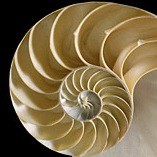Surat At-tīn is analyzed here on this blog, where I discussed how “all four oaths are possibly places where significant messages were sent to their respective messengers.” Here I want to examine the oaths a bit further to reveal an even bigger picture.

These oaths are the first three ayat/verses of this sura which has a total of eight (8) ayat. Notice the first aya contains two different oaths, both of which are fruits, the fig with many seeds and noted for its sweet flesh, and the olive with one seed/ pit, not sweet but known for its oil. In the 3rd and 4th oaths located in the 2nd and 3rd ayat (a {2,3,4} set) Allah swears by two places: Mt. Sinai, a “wild/natural” place away from people, and Makkah, a city, which is in essence a civilized place, a human construct. It’s not referring to the Kaaba but rather to the city itself as a secure place. Of course all 3 ayat containing 4 oaths (a {3,4} set) relate to the sending of Divine revelations through prophets; all these meanings tie together.
Continue reading






